resurrecting a Macintosh IIci for music
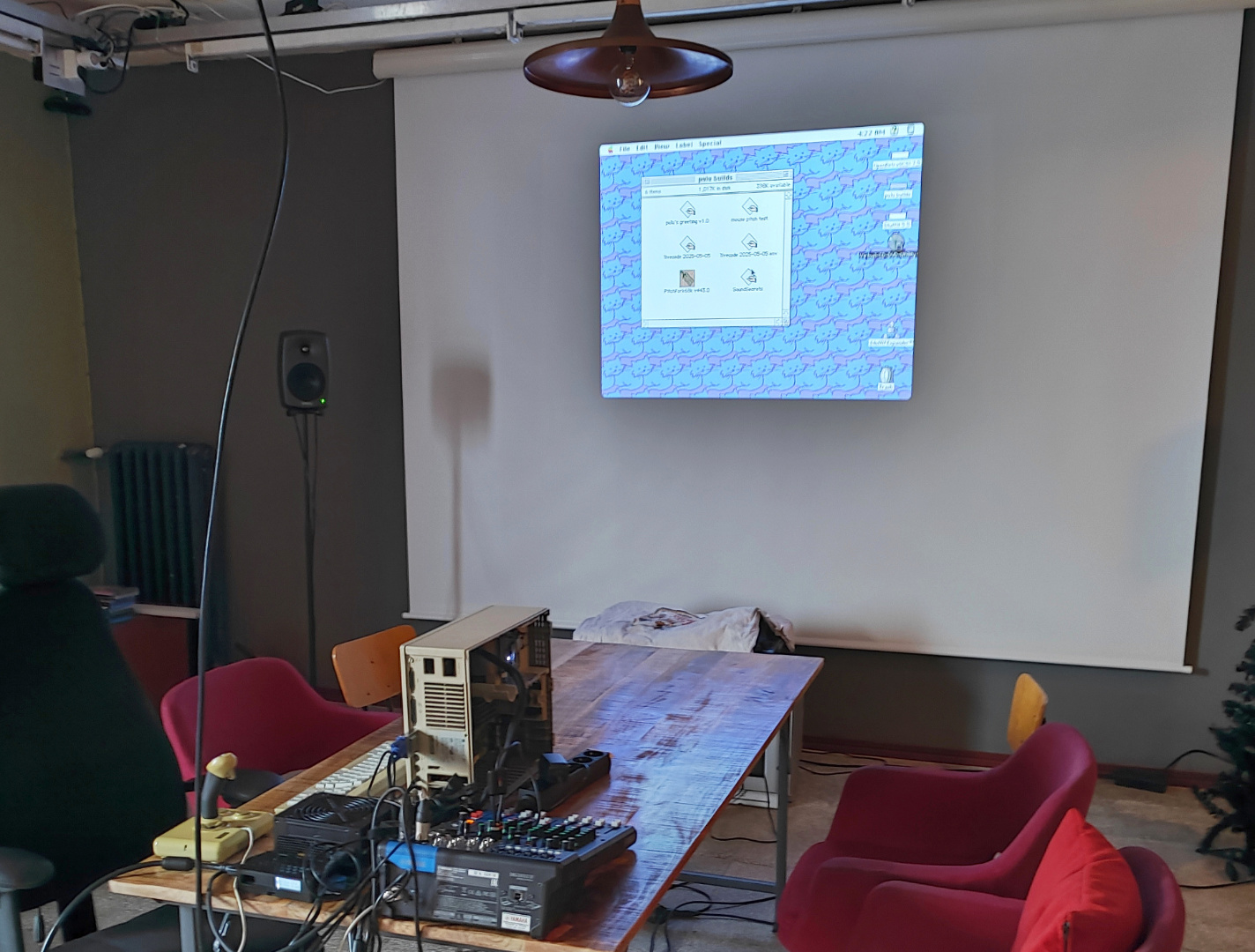
the Macintosh IIci was introduced in September 1989, a few months before i was born. my grandpa (RIP), who worked as an art director, had one of these at home. when i visited as a child, i got to play around on this machine, exploring art programs like Dabbler. it was also where i experienced Myst for the first time, although being barely able to read, i did not make it very far in the game.
as advances in computer technology marched on, this IIci ended up in storage for a couple of decades. after grandpa passed away and it came time to empty his cellar, i acquired the machine as it seemed like a waste to throw it away. maybe one day i would try to get it running again!
a few years passed and i forgot about the whole thing. while cleaning one day, i stumbled upon the IIci again and decided to give it a try. i plugged it in, and BANG! a loud pop startled me and a horrible smell filled the room. i quickly unplugged the machine and spent the next few hours ventilating the apartment.
since i was unable to see anything damaged on the motherboard, i guessed the problem had to be in the power supply (indeed, i learned later this is a common failure mode of Rifa capacitors used in these power supplies). i did not feel like taking it apart, so i put the IIci back in storage and forgot about it again.
more years passed. March 2025 came along, and i participated in MARCHintosh for the first time. inspired by all the cool 68k Mac setups i saw other people running, i decided i would now seriously try to resurrect the IIci.
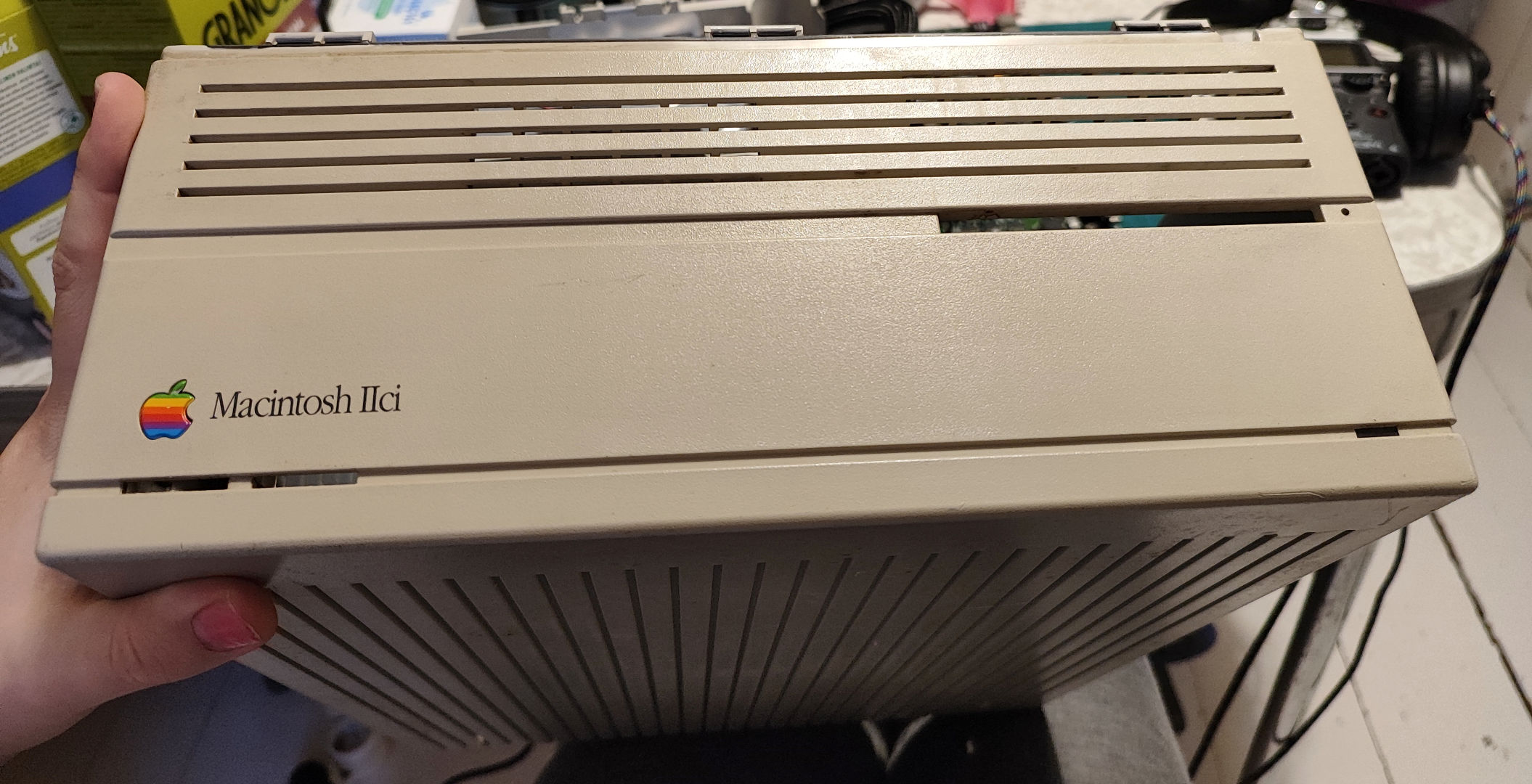
power
with the power supply out of order, i was faced with two options: either recap the original power supply, or do a mod to use a more standard power supply. the second option seemed more future-proof, so i ended up ordering an OldMacATX adapter board to use with a standard ATX power supply.
actually, i had to get five boards (the minimum order on JLCPCB), so if you are in Finland and interested in using ATX power with your retro Mac ("IIcx, IIci, (IIsi? should be the same), IIvx, IIvi, P600, C/Q650, Q800, PM7100"), please get in touch! :)
after soldering the two connectors to the OldMacATX (a very simple job), i was ready to try powering on the IIci again!
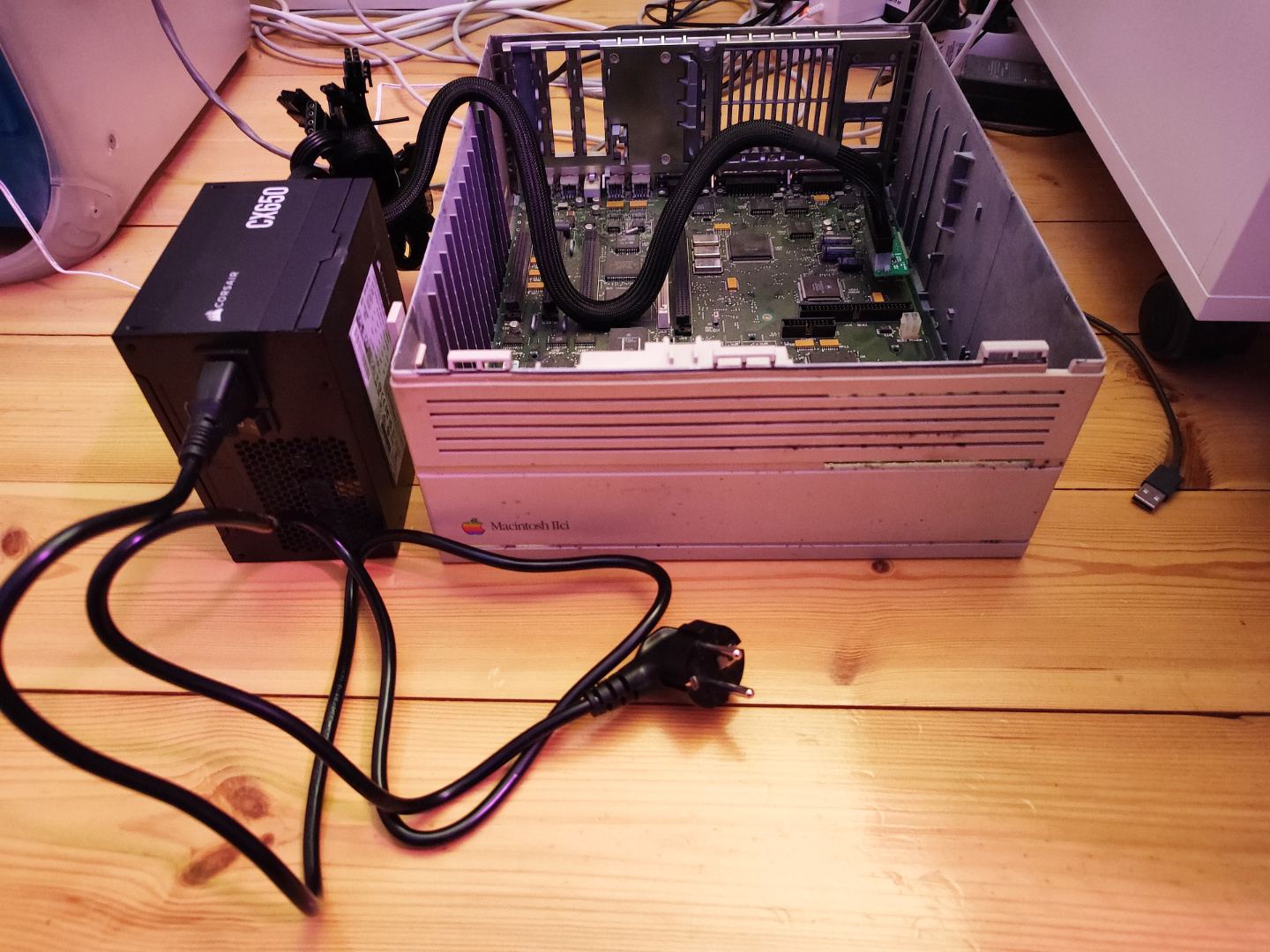
the power LED lit up and the hard drive started spinning. but there was no boot chime from either the speaker or the headphone jack, and the hard drive activity LED never flashed. not a good sign.
i decided to take out the motherboard, give it a good cleaning and do a closer inspection for any signs of damage. and eventually i found the problem: two pins on the CPU were slightly bent, causing a short! i very carefully bent them back and tried again. there was a very quiet boot chime, and the hard drive showed activity!
analog video
to further see what was going on with the IIci, i needed to get video output. but i never had the Apple CRT that it originally came with, and generally i prefer not to keep CRTs around as they are quite bulky. ideally, i wanted to have HDMI video, so i could patch it to any of my displays and/or my capture card.
the first problem was that the IIci has an unusual Macintosh Video connector named DA-15 (but often called DB-15). there are a few different adapters that can turn this into VGA; i ended up getting a Unimac 82D.
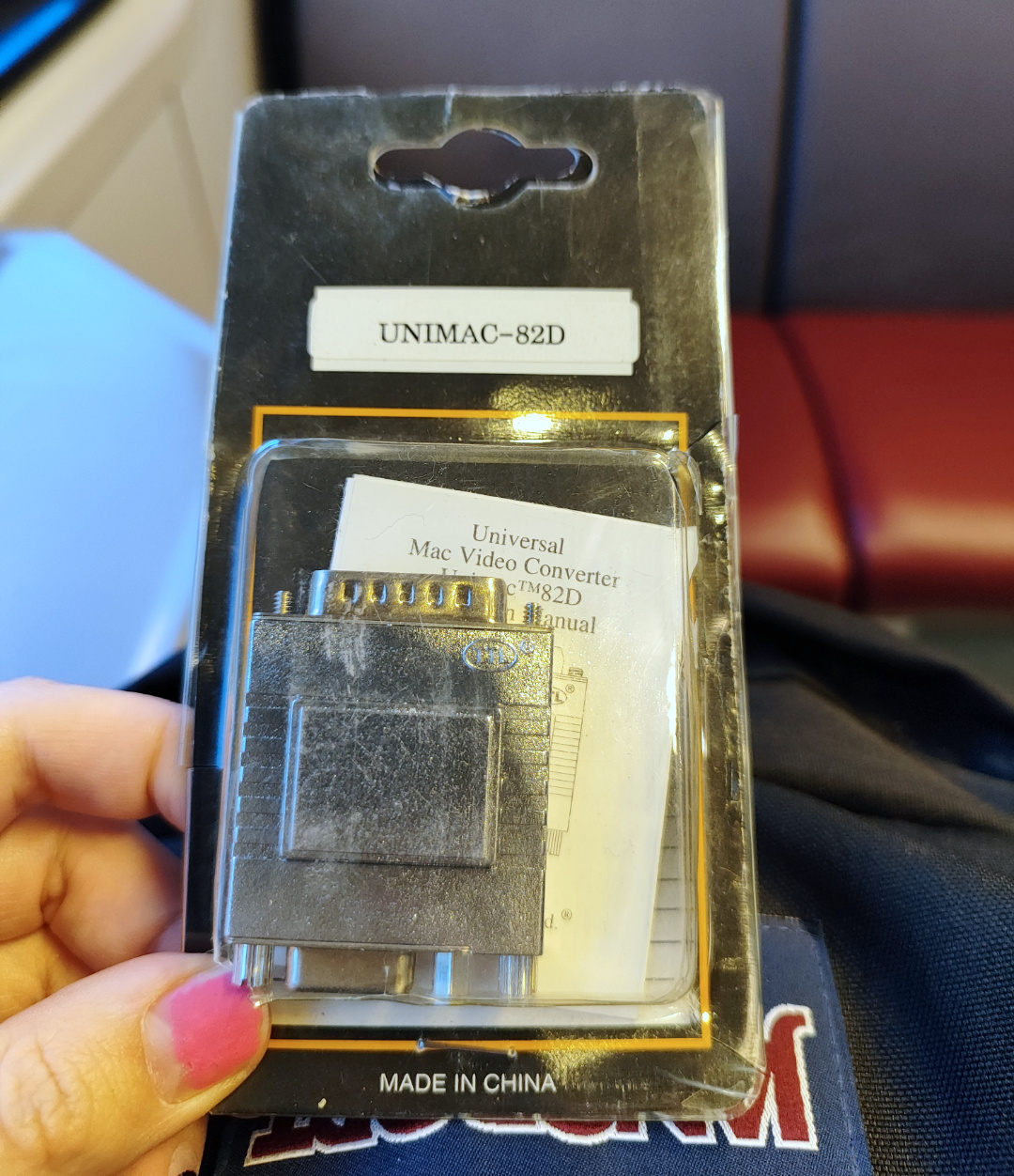
the second problem was that the video signal also uses an unusual type of sync. Big Mess o' Wires has all the details, but the practical result is that it was not recognized by my VGA to HDMI converter, nor any of my displays... except one! the Dell 2007FP i use as a third display in portrait orientation apparently has very good compatibility, and i could see the IIci start up and get to the "no operating system found" indicator. seems like the hard drive was dead.
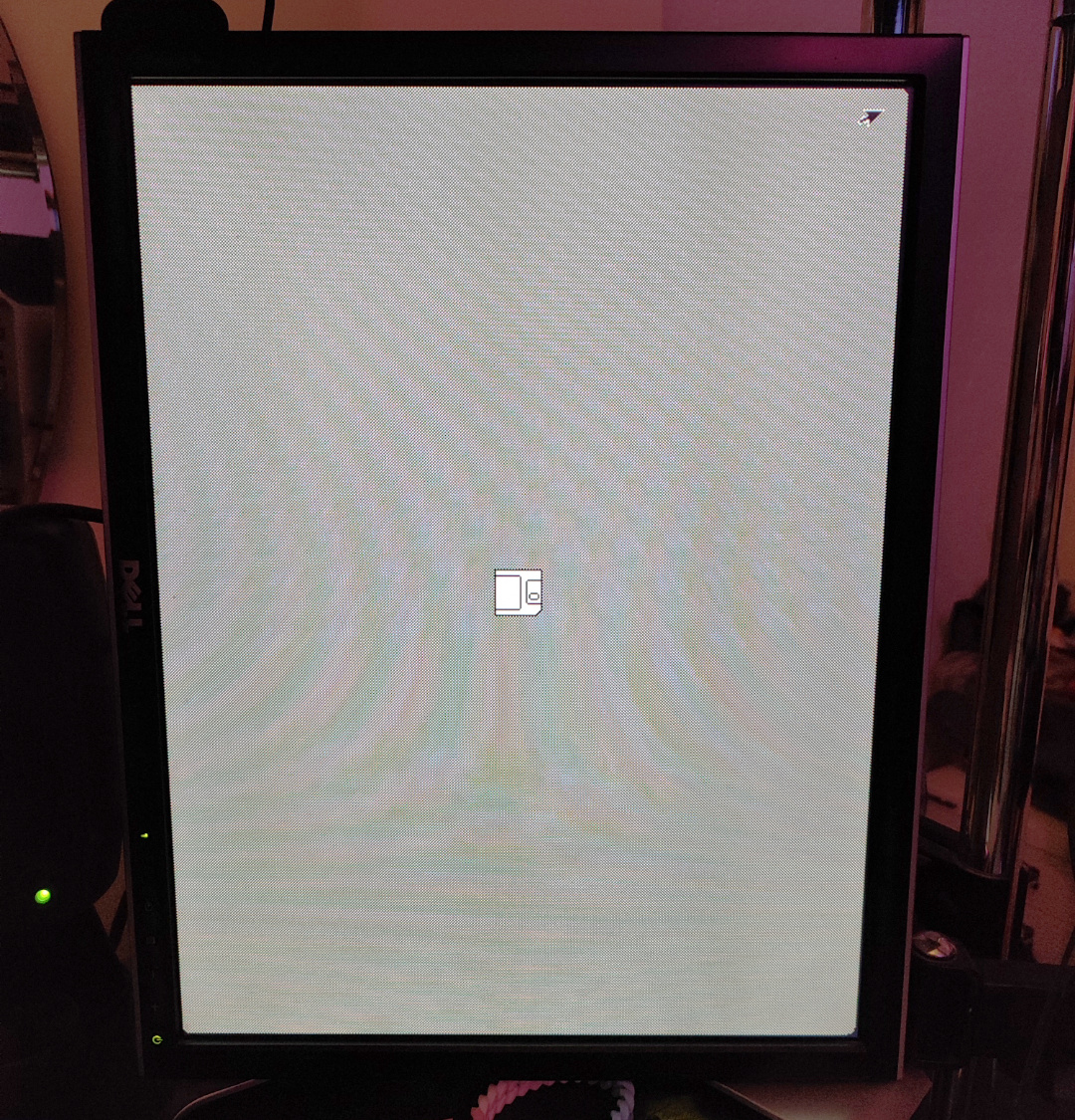
the 2007FP is almost 20 years old, and i am not sure how much longer it will last. besides, the sideways orientation was a bit inconvenient. before dealing with that, though, i decided to look into alternative storage options.
storage
the IIci connects to hard drives via SCSI. there are now a variety of devices available to adapt more modern storage technologies to SCSI. i went with a BlueSCSI v2, a Raspberry Pi Pico based card that takes an SD card with disk images and presents them to the IIci as SCSI devices. i already had a bunch of Picos waiting for a project, so this was a perfect fit. (i actually ended up using a Pico W, which additionally allows the BlueSCSI to act as a network interface. still need to try this out!)
i soldered the Pico W and a few headers onto the BlueSCSI board, flashed the firmware, and installed jumpers as instructed in the documentation (i got it wrong at first, but was kindly helped by the BlueSCSI account on Bluesky). i then screwed the board onto the mounting bracket and finally screwed that onto the IIci's hard drive caddy.
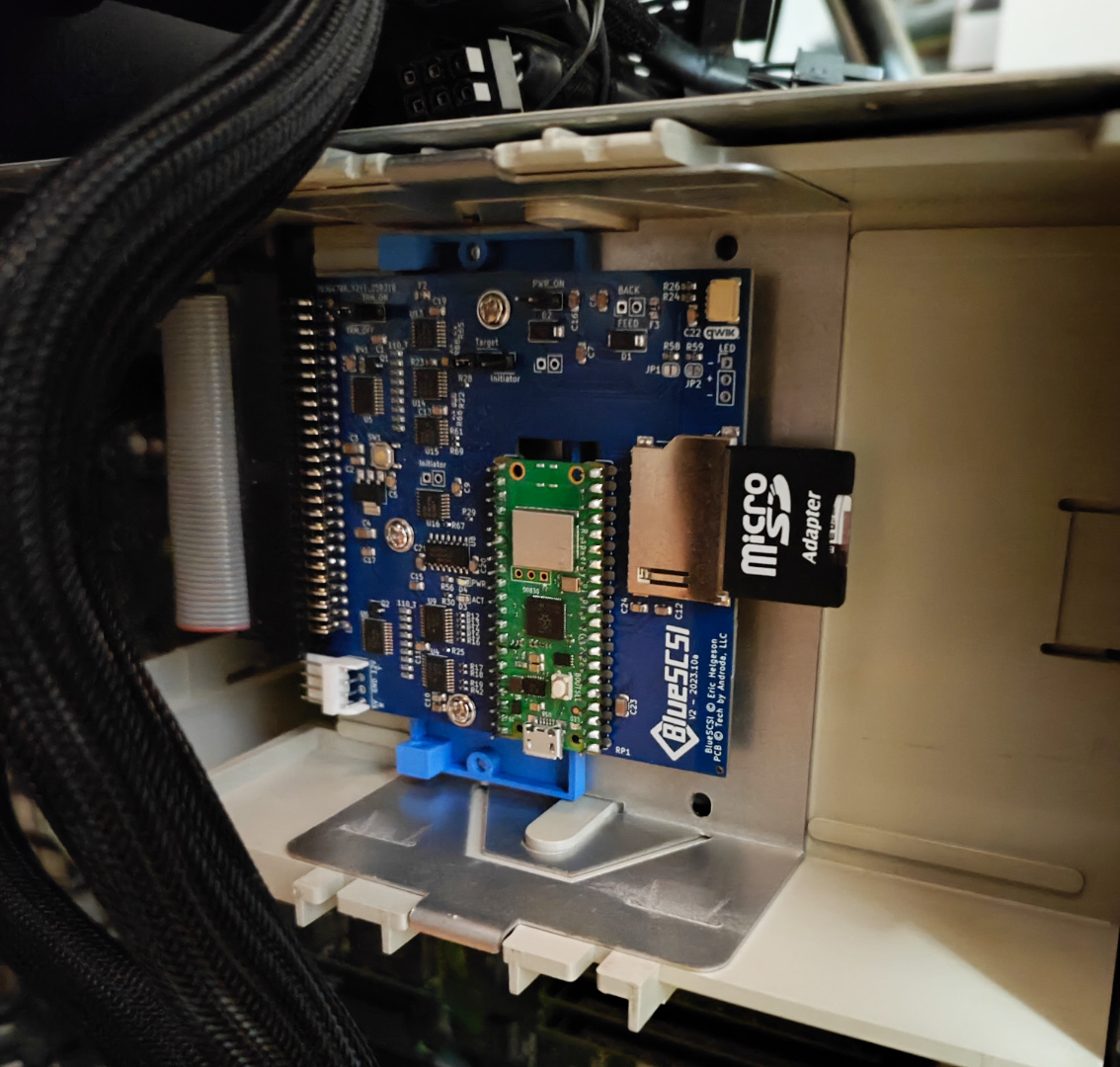
with a Mac OS 7.5.3 image prepared on the SD card, it was time to boot!
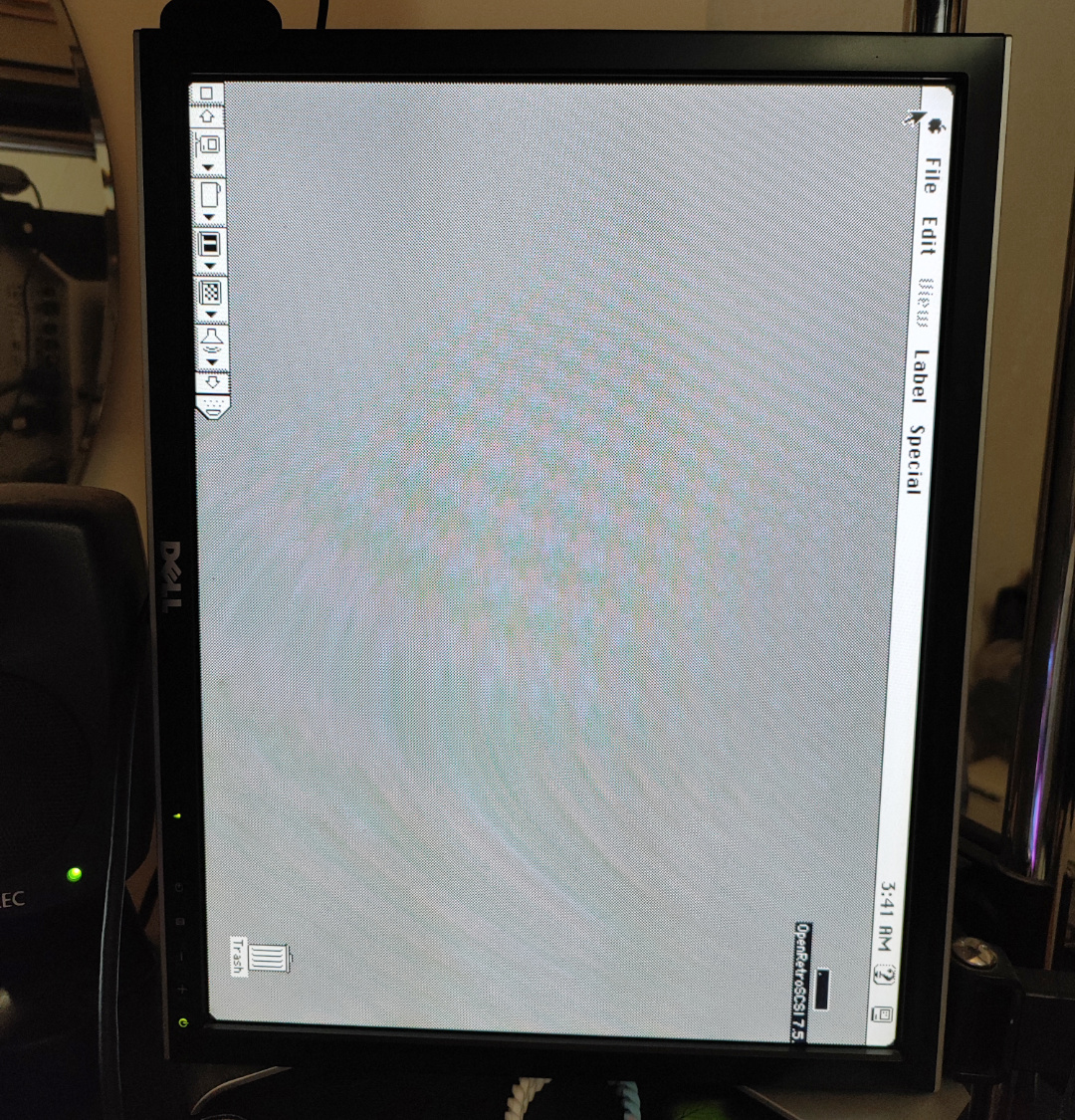
the 7.5.3 desktop came up just fine, though in black and white. i guess that is just the default setting. i would need to plug in a mouse to explore more!
input
Macs from this era used ADB (Apple Desktop Bus) ports for the mouse, keyboard and other peripherals. i thought i had an ADB mouse somewhere, but was unable to find it. however! i had fortunately kept the Gravis MouseStick II from my childhood. this is an ADB joystick that acts as a mouse. it is quite awkward to use (and i can never seem to get the calibration quite right), but at least i could move the cursor and click on things. this allowed me to set the display to 256 colors, change the desktop background to a nice cat pattern and pull up the system info.

i also found an ADB keyboard. it has an... interesting arrow key layout.

but it would be enough for testing. i had no ADB cable, but i did find an S-Video cable, which uses the same connector. a word of warning though: some S-Video cables short the two ground pins together. such cables are not ADB compatible and are potentially dangerous to plug in, so test with a multimeter first! mine was fine though, so the keyboard was successfully connected.
old peripherals have their charm, but i control all my other computers via two trackballs and keyboards on my desk which can be routed anywhere via a USB patchbay. i really wanted the IIci integrated into this system, so i went looking for ADB-USB adapters. i settled on the Big Mess o' Wires ADB-USB Wombat, as the two-way connectivity seemed nice to have.
instead of the open acrylic case sold on the BMOW website, i opted to save some money and 3D print the ADB-USB Wombat Case (Revised) by salfter. it came out quite nice, but the lid does not really stay on by friction alone. i decided to stick them together with a couple droplets of hot glue, just to keep the lid from coming loose in normal use.
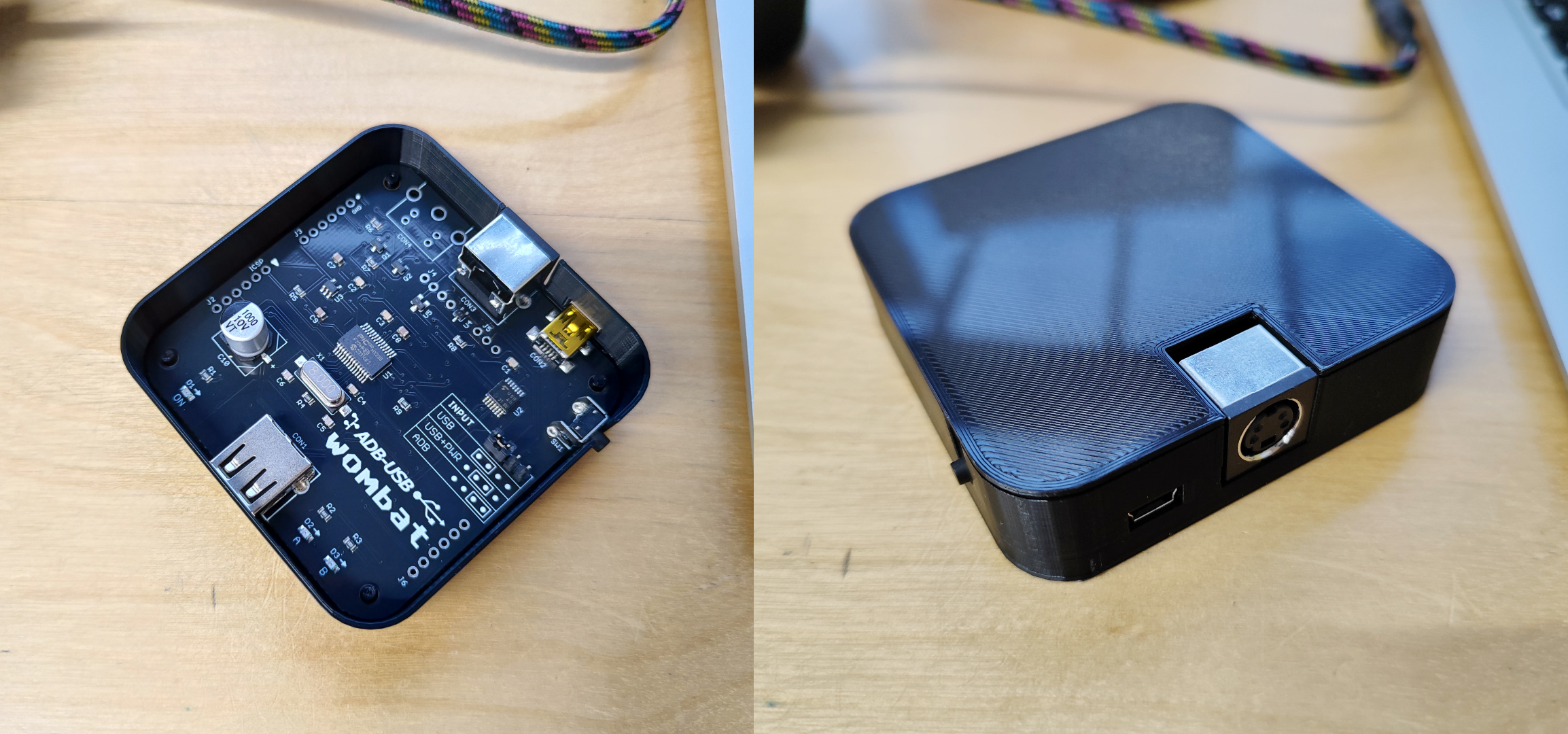
digital video
at this point i was tired of bending my neck sideways to read things on the 2007FP, so i decided to invest in an Open Source Scan Converter (OSSC), which people online had confirmed is compatible with these retro Mac signals.
it took a bit of configuration, but the OSSC finally gave me the IIci's video output as HDMI! the aspect ratio is a bit off (the IIci is running at 640x480 resolution), but i can live with it.
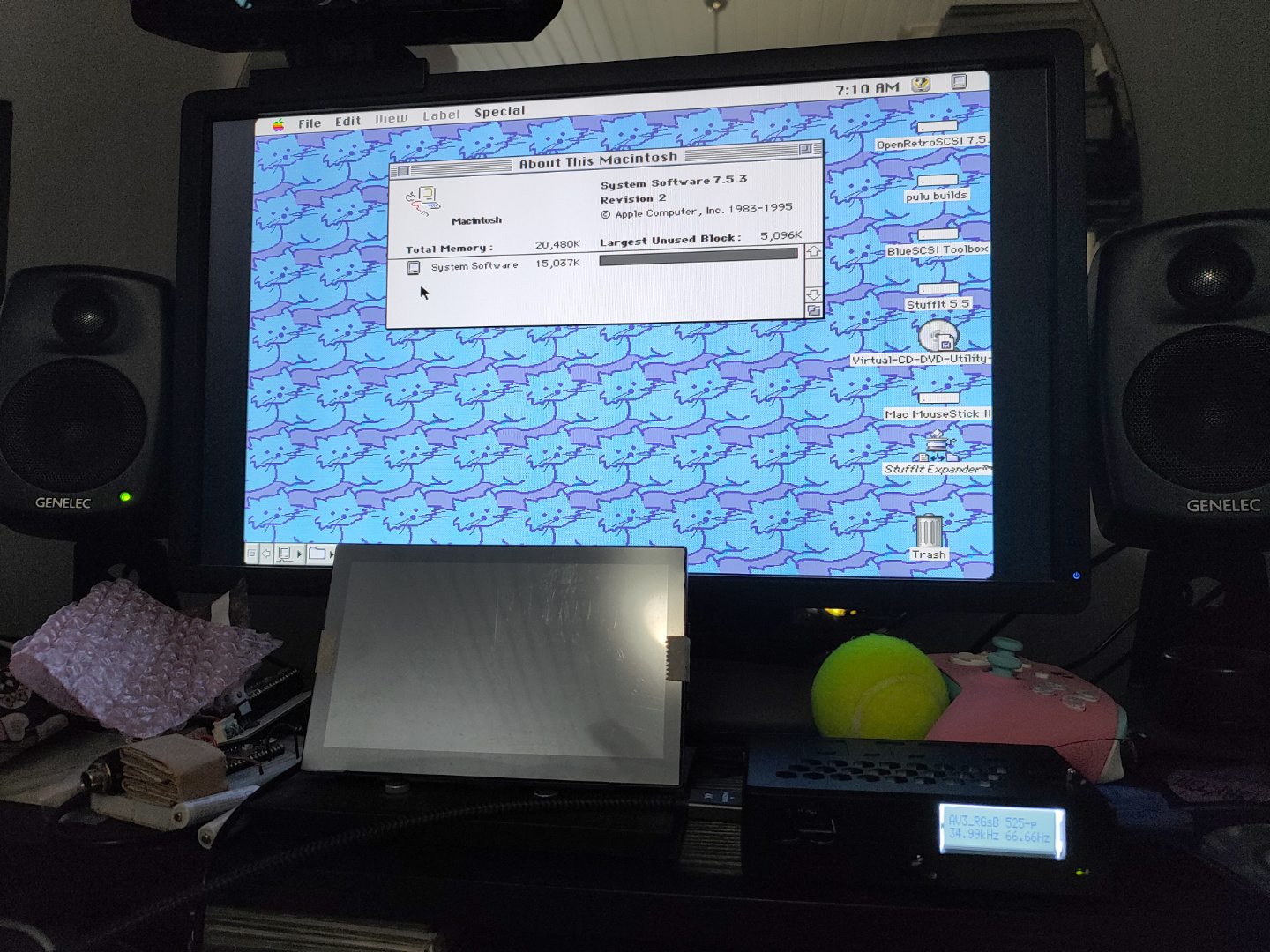
audio
i mentioned before that the boot chime was very quiet, and the same goes for all the audio coming from the machine. this of course suggests bad capacitors. i intend to recap the motherboard as soon as possible, but i am still waiting for some new flux to arrive.
in terms of sound hardware, the Apple Sound Chip on the IIci has stereo audio with an unusual sample rate of 22254 Hz, at 8 bits per sample.
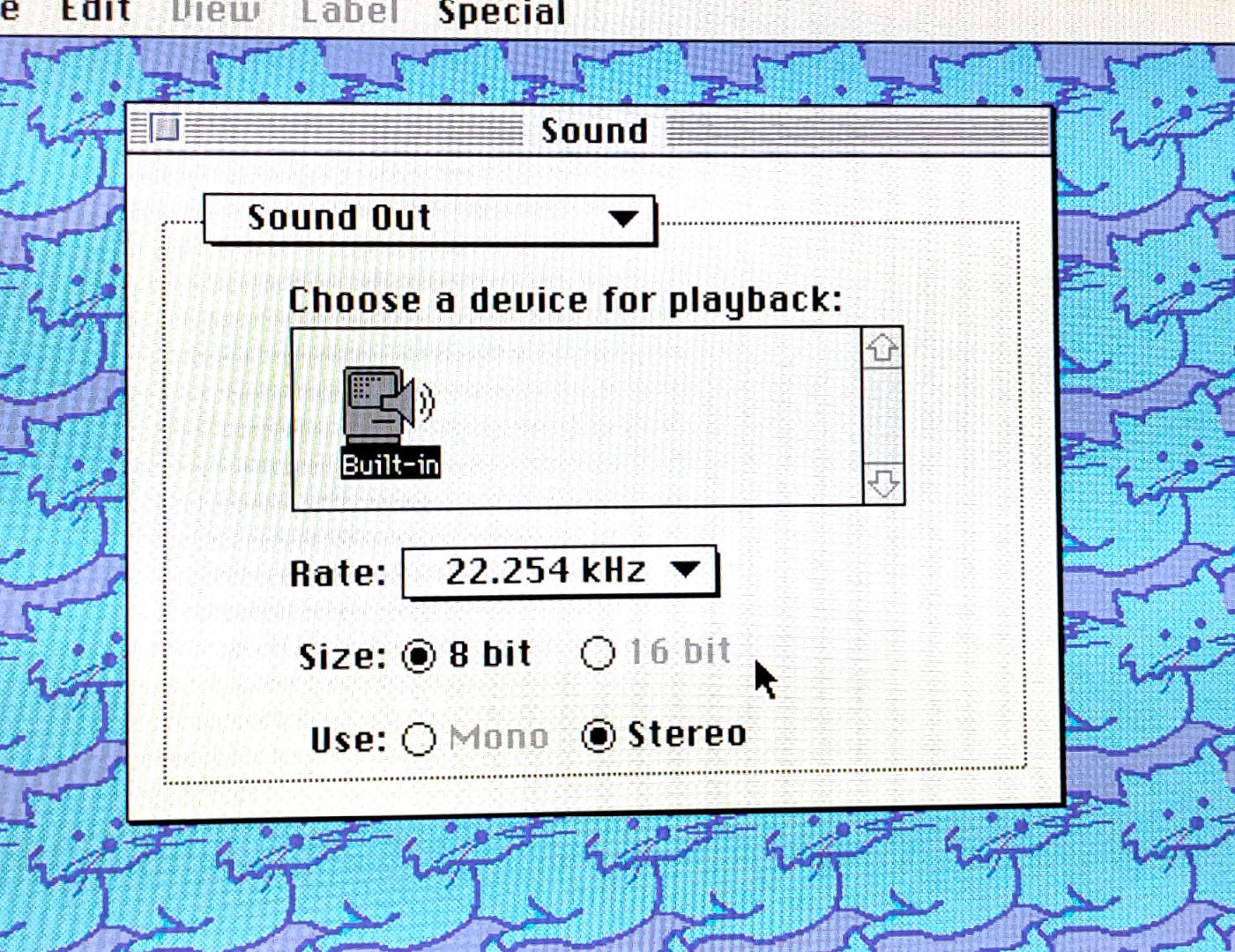
music
i have been creating music with retro Macs for the past few years:
- i built a live performance system with SuperCollider 2 on an iBook G4 running OS 9 and have played various shows with it.
- i produced the millions of colors EP entirely on my Power Mac G4 Sawtooth, also on OS 9.
but G4s are of course relatively recent and extremely powerful, in comparison to the IIci. :) so while waiting for the various components discussed in previous sections to be delivered, i started wondering: would it be possible to livecode music on the IIci?
i was not able to find any live-oriented music programming languages for 68k Macs. even SuperCollider 1 required a PowerPC Mac. OutOfPhase has a 68k version, but it is very much not live, and the programming part is only for synthesis as far as i know.
what would a music livecoding system for 68k look like? what compromises would be required to make it run smoothly on the IIci's 68030 clocked at 25 MHz?
i have started writing my answer to these questions. it is a full-screen editor for a Forth-inspired postfix language that currently can play up to eight wavetables at specified pitches. sapf is another source of inspiration. i am writing this in C++ and compiling with CodeWarrior Pro 6 on the Sawtooth. there is still a lot of work to do, and i will talk more about this in a future post. in the meantime, you can follow me on Mastodon or Bluesky for updates!
[to be continued]